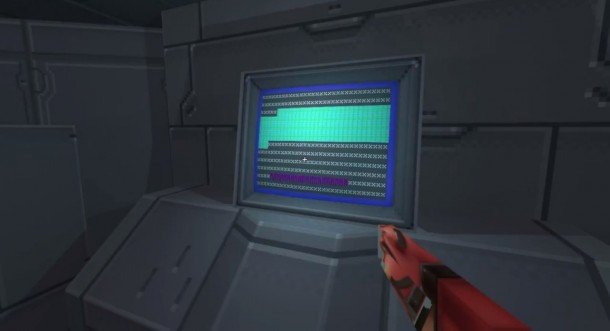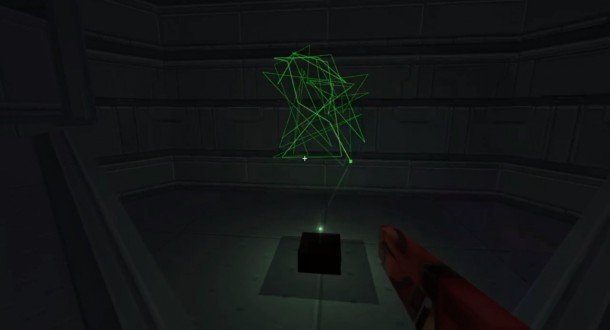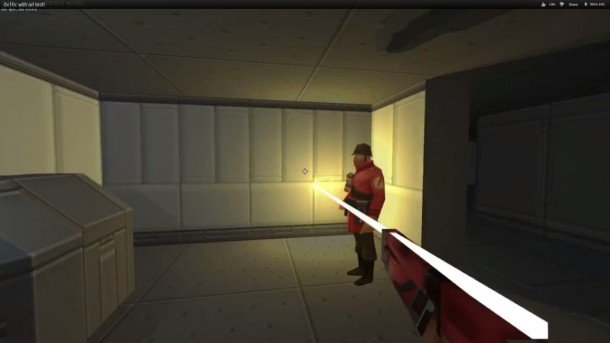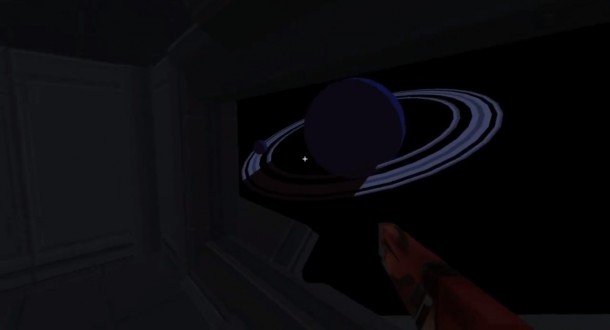New 0x10c footage emerges - we talk to Notch about his game's interstellar ambition

The fan forums are full of wild speculation about what might be in Markus “Notch” Persson's next game, but the devs over at Mojang are still experimenting with the precise form 0x10c will take. When I head over to Stockholm to visit them, Notch has only just decided it's going to have textures.
What is clear, however, is that this is a project of considerable ambition, which brings together the principles of player-creation, multiplayer and resource-gathering that established Minecraft's success, and pitches that into an Elite-style space-game.
Except, unlike Elite, you take control of a person inside a ship rather than the ship itself - which has a 16-bit brain you can programme. Oh and there are seamless space-to-planet transitions, too.

“The goal is to have it feel a bit like Firefly,” says Notch. “You can try to land on a planet but you mess up and, instead of having the ship just explode like it would in real life, the landing gear gets broken. Then you have to try to fix that by finding resources. Instead of the adventure being flying from here to here, it's: I set the destination, oh god I hit a small asteroid and the cloaking device broke. I think they really nailed that kind of emergent aspect in FTL. ”
It's more of a forgiving game than FTL, however - a long-form style of game without FTL's brutal cycles of life and death.
“I'd really like for stuff to go wrong,” says fellow 0x10c dev, Tobias Möllstam. “But I think we've managed to establish a philosophy where things can go wrong and we're not going to judge too much. Like you run something at 120% and catches fire, but you just about make it. It's kind of cheesey but I like it. Having a programmable and customisable ship means that there's a lot more investment, and the game should reflect that and allow you to have it for a long time.”

Notch specifically wants to recapture that demoscene era of programming when it was relatively simple for a single person to do everything. But will code-newbs such as myself even be able to play the game? Notch suggests we will.
The biggest gaming news, reviews and hardware deals
Keep up to date with the most important stories and the best deals, as picked by the PC Gamer team.
“I'm trying to design the game so you don't have to know programming but you can share the code,” says Notch. “If you have a friend who's made this really awesome docking algorithm, you can put that on a floppy disk within the game and put that into your computer.”
We're some way of a black market for docking mechanisms though - the game doesn't have any netcode yet.
“Right now it's not multiplayer at all, I'm just trying to figure out the actual mechanics for it,” says Notch. “With Minecraft I waited too long to add multiplayer, so that was a huge hassle. So now, as soon as it's fun, I'm going to do the multiplayer. But nothing in the game is fun right now. I need to figure out what is actually a fun game mechanic in all of this.”

The fun will come, no doubt - shortly after Notch has figured out how to get stairs working. It's a little more challenging than it might otherwise be, because Notch is working with the same physics model for both the simulated gravity of the ship's interior and the weightless vacuum of space.
“The idea is if the gravity generator crashes and you accelerate, you kind of get pushed backwards. If you get hit by something, everything can go 'Bonk!' You have wires, you have attachment parts that kind of hang down, so you can see [the effects of gravity and inertia] in how the wires hang. That's one thing I don't like about space games: they focus on the ship instead of the people in the ship. I want this to feel a bit like Alien, where the ship has this personality.”
That's one of the reasons Tobias was attracted to the project too: “I also wanted to be a person on a ship - you're always a ship - it's like a flight sim in space, when I'd like it to be much more like a submarine simulator or something.”

All these ideals stated, both Notch and Tobias are careful to leave the future of the project ambiguous.
“We don't know where 0x10c is really headed,” says Tobias. “We've built a lot of hype around it - now we need to take a step backwards and not raise too many people's expectations. I like hearing fans hypothesising about what will be in the game. I think I read someone saying, 'I want to have a station with automated turrets that identify incoming ships, and if they're not identified they'll warn them and then shoot at them, fully automatically.' And that sounded fun - it wasn't so much that we should take that idea, as that we should make a game so people can do stuff like that. Because with Minecraft it's been really rewarding to create that sort of environment.”
But first, Notch still has those textures to sort out.
“I'm very tempted to go with the Minecraft look of like pixelated textures,” he says, “but I have the problem of planets being very very far away. If you go closer you don't want the pixels to be like 15 kilometers large. So it has to switch between different textures, and you don't want that switch to look bad. But maybe we could do it to intentionally look like games used to when they loaded in a texture. We could do that in a kind of ironic way.”

